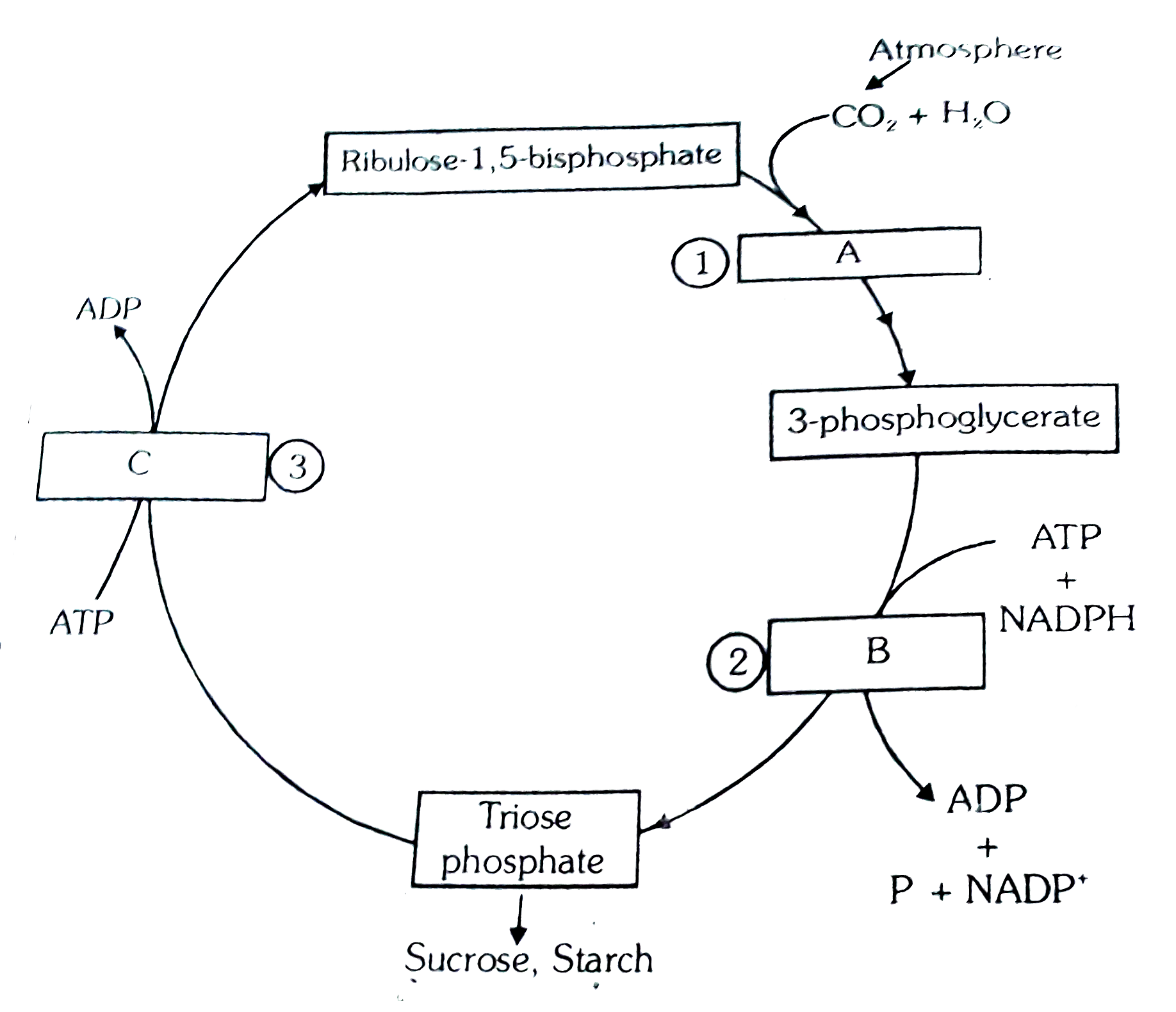How many turns of Calvin cycle must occur if 9ATP and 6NADPH+H+ are utilized giving a net gain of one molecule of PGAL?
one
two
three
six
The correct Answer is:C
To determine how many turns of the Calvin cycle are required to produce one molecule of PGAL (Phosphoglyceraldehyde) using 9 ATP and 6 NADPH, we can follow these steps:
1. Understand the Inputs and Outputs of the Calvin Cycle:
- The Calvin cycle requires ATP and NADPH as energy sources.
- For each turn of the Calvin cycle, the typical energy requirement is:
- 3 ATP
- 2 NADPH
2. Calculate the Number of Turns Based on ATP:
- Given that 9 ATP are utilized, we can calculate the number of turns:
Number of turns from ATP=Total ATPATP per turn=9 ATP3 ATP/turn=3 turns
3. Calculate the Number of Turns Based on NADPH:
- Given that 6 NADPH are utilized, we can calculate the number of turns:
Number of turns from NADPH=Total NADPHNADPH per turn=6 NADPH2 NADPH/turn=3 turns
4. Determine the Net Gain of PGAL:
- Each complete cycle of the Calvin cycle produces one molecule of PGAL for every 3 turns of the cycle.
- Since both calculations (from ATP and NADPH) indicate that 3 turns are needed, this confirms that:
- 3 turns of the Calvin cycle will yield a net gain of 1 molecule of PGAL.
5. Conclusion:
- Therefore, the total number of turns of the Calvin cycle required to produce one molecule of PGAL with the given inputs is 3 turns.
Final Answer:
3 turns of the Calvin cycle are required to produce one molecule of PGAL.
---
- The Calvin cycle requires ATP and NADPH as energy sources.
- For each turn of the Calvin cycle, the typical energy requirement is:
- 3 ATP
- 2 NADPH
- Given that 9 ATP are utilized, we can calculate the number of turns:
Number of turns from ATP=Total ATPATP per turn=9 ATP3 ATP/turn=3 turns
- Given that 6 NADPH are utilized, we can calculate the number of turns:
Number of turns from NADPH=Total NADPHNADPH per turn=6 NADPH2 NADPH/turn=3 turns
- Each complete cycle of the Calvin cycle produces one molecule of PGAL for every 3 turns of the cycle.
- Since both calculations (from ATP and NADPH) indicate that 3 turns are needed, this confirms that:
- 3 turns of the Calvin cycle will yield a net gain of 1 molecule of PGAL.
- Therefore, the total number of turns of the Calvin cycle required to produce one molecule of PGAL with the given inputs is 3 turns.
3 turns of the Calvin cycle are required to produce one molecule of PGAL.
Similar Questions
Knowledge Check
How many full turns of the Calvin cycle are required to make one molecule of glucose
AEightBTwoCSixDFourhow many turns of Calvin cycle yield one molecule of glucose?
A8B2C6D4How many Calvin cycle form one hexose molecule
A2B6C4D8
How many ATP and NADPH2 molecules are used for fixing one molecule of CO2?
View SolutionDuring Calvin Cycle pathway ATP and NADPH2 is utilized for the reduction of
View SolutionHow many ATPs are produced during the glycolysis of one molecule of glucose ?
View SolutionHow many molecules of ATP are required during the formation of one molecule of glucose
View SolutionHow many molecules of ATP are obtained by the respiration of one molecule of glucose ?
View Solution


